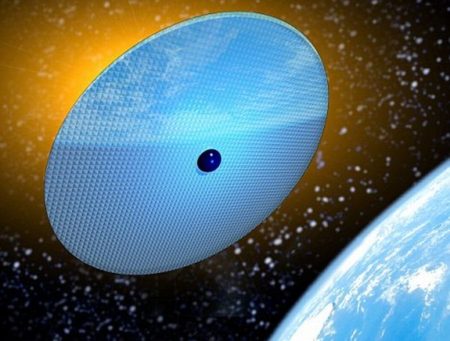July 18, 2019 – Climate scientists have given us an excellent picture of the consequences of continually adding carbon to the atmosphere in quantities greater than the absorptive capacity of the planet’s natural carbon sinks. That picture has included melting polar ice caps, rising sea levels, more acidic oceans, warmer temperatures, changes to precipitation patterns, and increased extreme weather events.
As we see evidence of many of these predictions coming to pass, it is as if we have been spilling stuff on the carpet and leaving it until the stain sets in. When it comes to carpets, tackling stains like this can be next to impossible. And that’s what geoengineering is as a solution to anthropogenic climate change. It is a next to impossible solution with likely many unintended consequences.
Geoengineering is jargon for developing technical fixes to our planet’s climate. The idea is to use a bunch of different technologies to cool the planet down as opposed to addressing the source of what is causing it to warm – excess amounts of heat-generating carbon in the atmosphere.
Among the many geoengineering solutions are:
- Solar radiation management by satellite
- Upper atmosphere aerosol release
- Direct capture of carbon in the atmosphere
- Seeding the oceans
- Stopping polar ice melt
- Green walls and reforestation
Academic researchers have been looking at the technical challenges and potential implications of these various schemes. The UK’s University of Cambridge has even established a centre for climate repair. Harvard University has a solar engineering research program. Even the Intergovernmental Panel on Climate Change, the IPCC, has succumbed to the notion that we may have to implement some, if not all of these technical fixes if we are to bend the carbon curve downward and keep mean atmospheric temperatures from rising well above the end of century desired target of no more than a 1.5 Celsius (2.4 Fahrenheit) increase. As a point of reference, since the desired target was set at the Paris Climate Conference in 2015, the world has awakened to realize we are already two-thirds the way there to that limit with more than 80 years remaining in the century. That may explain why the IPCC is exhibiting a bit of desperation in discussing geoengineering as a fix.
Let’s briefly look at each of these technological fixes as we understand them today.
Solar Radiation Management (SRM)
This is the most favoured technical solution to our rapidly warming planet. Why? I don’t know.
What’s involved? Reflecting the sunlight that normally would enter the atmosphere back into space.
One scheme would put large-mirror satellites in high orbit to act as sunshades deflecting the solar radiation from the atmosphere.
The idea overlooks the problem should one of these enormous sunshades fail after a number of years. Not only will it create a space junk disposal problem, but it might de-orbit and crash into the atmosphere. And building and launching a replacement will come at enormous cost both in time and materials.
Do the satellites have to be huge sunshades, or could we park thousands of smaller solar deflectors in low-Earth orbit to reduce sunlight entering the atmosphere, similar to the Elon Musk satellite Internet deployment currently underway by SpaceX?
Astronomers will certainly object to either scheme (they are already to SpaceX Internet scheme) since it would alter the night sky and celestial observations from Earth.
And should a satellite or a number of them fail, how much would that impact atmospheric temperatures in a short period of time, as well as weather patterns?

Upper Atmosphere Aerosol Release
The more talked about scheme is upper atmosphere aerosol release, also known as stratospheric aerosol injection.
What is involved? The dumping of sulfur particles in the high atmosphere.
Like a volcanic eruption, the particles injected at these elevations, mostly sulfur dioxide (SO2) would remain airborne for years reducing the amount of solar energy reaching the low atmosphere.
The common example seen in reference material is the Mount Pinatubo eruption of 1991 which put a cloud of volcanic ash into the high atmosphere and resulted in a period of global atmospheric cooling that lasted over two years.
For geoengineers to duplicate Mount Pinatubo indefinitely, they could construct a fleet of aircraft and fly them into the lower stratosphere to continuously release SO2. Pinatubo injected about 17 megatons (17 million tons) of aerosols into the upper atmosphere producing a cloud that spread in three weeks around the Earth and eventually covered the entire globe one year after the eruption.
One estimate concludes it would take 1oo specially-designed aircraft, and 4,000 flights beginning annually in the early 2020s, growing by an additional 4,000 flights incrementally until mid-century to halve the radiative impact of the sun on our atmosphere.
The initial cost would be $2.5 billion USD to build the aircraft, and $2.5 billion in operational costs in the first year. Those operational costs would increase as flight frequency grew over the next thirty years.
The challenge of this strategy is little science and research to date has been done on how such a geoengineering project might alter wind, cloud formation, precipitation patterns, ocean surface temperatures and circulation, and continental and sea ice formation and melting cycles.

In Part 2 we will continue to look at proposed geoengineering solutions and their potential to help in mitigating climate change.















